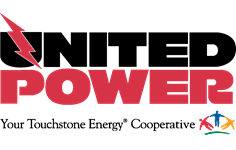United Power Consistently, Significantly Better than National Average
United Power understands the most important thing its members want is consistently reliable power. Being able to deliver uninterrupted power is prominently weighed in how the cooperative defines success each year. Since altering its maintenance practices a few years ago, United Power’s reliability has significantly improved, as have its outage numbers. Already an industry leader in automated field devices and other innovative projects, the cooperative is also trending well below the national average in utility outage times, setting yet another standard for others to emulate.
The national average for outage duration among electric utilities in the United States has consistently hovered around 120 minutes per meter. This means the average electric consumer can expect to experience approximately two hours of outage time at their home over the course of a year. When United Power’s operations team instituted a new data-driven maintenance plan in 2017, its average outage times resembled the national averages. In the four years following the plan’s launch, the cooperative’s outage times per meter have dropped below 70 minutes.
The new maintenance practice focuses on analyzing data collected across thousands of miles of line to isolate the worst performing segments. With these segments identified, targeted maintenance projects can be scheduled to improve their performance.
“When you target maintenance efforts at the worst performing parts of the system it improves reliability for members served off of it,” said Bryant Robbins, United Power’s Chief Operating Officer. “Maintenance is an ongoing process, but as long as we continue analyzing the data, isolating problem sections and targeting our maintenance efforts to improve them, it improves the whole system’s reliability and resilience.”
Devices on the system, such as enhanced technology in substations and advanced metering equipment, collect data and transfer it back to system operators. In the event of an outage, these devices can capture important information, such as time, location and sequence-of-events. Armed with this, lineworkers in the field can use the information to restore power to members more quickly, which also contributes to decreased outage times. Without this information, not only would identifying problematic areas be difficult, or even impossible, it would also create additional delays in power restoration as lineworkers inspect miles of line to find the cause.
Some system improvements have served dual functions. United Power recently published its comprehensive fire mitigation plan, which includes new standards and program initiatives primarily focused on areas of the territory that are particularly at risk of wildfires, such as Coal Creek and Golden Gate Canyons. In December, storms blew through the territory with wind speeds in excess of 115 mph, including the storm that ultimately fueled the Marshall Fire. The cooperative activated its fire mitigation protocols during these windstorms, and due to proactive upgrades only experienced a few small outages.
“Our maintenance and system improvement efforts are already paying off for our members,” said Robbins. “Implementing this new maintenance plan has been effective and is proving its value. It’s hard to estimate how many outages you’ve prevented when you don’t have them, but our proactive efforts have gone a long way in helping prevent and/or quickly resolving outages.”
Regardless of the size or length of outage, United Power is continually investigating what causes them and how it can implement new practices to decrease their impact to members and duration. From system redundancies allowing the cooperative to restore power from a secondary location while repairs are being made to deploying an industry-leading number of automated devices, improving system reliability is one of United Power’s core goals.

